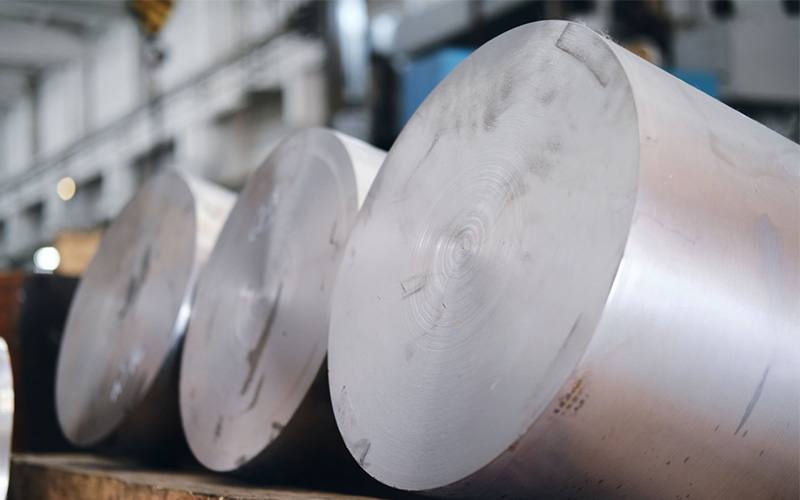Physical Address
304 North Cardinal St.
Dorchester Center, MA 02124
Physical Address
304 North Cardinal St.
Dorchester Center, MA 02124

4140 steel is a special metal. It is strong and tough. People use it to make many things. It has parts of chrome and moly in it. These make it very good for hard jobs. [^1]
4140 steel has many things in it. Here is what you find in this steel:
Look at this table to see what is in it:
| Part | How Much |
|---|---|
| Carbon | 0.38-0.43% |
| Chrome | 0.8-1.1% |
| Moly | 0.15-0.25% |
| Manganese | 0.75-1.0% |
| Silicon | 0.15-0.35% |
| Sulfur | Less than 0.04% |
| Phosphorus | Less than 0.04% |
This mix makes it very good for jobs that need strong metal. [^2]
4140 steel can do many things well:
Many jobs need 4140 steel because it is so good. Let me tell you where we use it:
Cars have many 4140 steel parts:
A big truck test showed that 4140 steel axles last 40% more time than old ones. The axles did not break as fast when the trucks drove a lot. [^6]
Planes need to be safe and light. They use 4140 steel for:
Plane makers have rules for this steel. They call it SAE AMS 4140. This means it is safe for flying. [^7]
People who get oil from the ground use 4140 steel:
Oil work is hard on metal. This steel can take the hard work. [^8]
When people make new things, they use 4140 steel tools:
These tools need to stay the same size and shape. 4140 steel does this well. [^9]
4140 steel is not ready to use when it is made. We need to do things to make it just right:
We can make 4140 steel hard or soft with heat:
This can make it 45-55 HRC hard. That is like a good knife! [^10]
When the steel is soft, we can cut it with tools. When it is hard, we need carbide tools. These are very hard and can cut the steel. [^11]
We can join 4140 steel with heat, but we must be smart:
If we skip these steps, the steel might crack. [^12]
4140 steel has some chrome in it. This helps it not rust too fast. But it is not like stainless steel. In wet or salt places, we need to put a coat on it. Many shops put zinc or nickel on it to keep it safe. [^13]
When you need to pick a steel, 4140 is good for many jobs. Here is why:
4140 steel costs more than plain steel. It is about 15-20% more money. But it is 2-3 times more strong and tough. So you pay a bit more but get a lot more good. [^14]
Look at how 4140 steel is next to other steels:
| Steel Type | What’s Good | What’s Not So Good |
|---|---|---|
| 4140 | Strong, tough, good price | Not the best for rust |
| 4340 | More tough than 4140 | Costs more money |
| 4130 | Good for joining | Not as hard as 4140 |
| 4145 | Harder than 4140 | Not as tough as 4140 |
This shows that 4140 steel is a good mix of all the good things. [^15]
Many big jobs use 4140 steel:
This shows how much people like this steel for hard jobs. [^16]
Let me tell you some real ways people use this steel:
You can get 4140 steel in many shapes:
Most metal shops sell it. Look for ones that say it meets ASTM rules. This means it is good steel. [^19]
Yes, but not as fast as plain steel. The chrome in it helps a bit. For wet jobs, put a coat on it.
Yes, but do it the right way. Warm it up first and heat it after. If not, it might crack.
4140 steel is much more strong and tough. It lasts longer and can take hard jobs that would break plain steel.
4140 steel is a good pick for many hard jobs. It has a good mix of:
But we need to work it the right way. With good heat work, it can be just what we need for hard jobs. [^23]
Now you know all about 4140 steel, what it is, and how we use it!
[^1]: Data from Xometry resources on 4140 alloy steel composition and applications. [^2]: Composition data from The World Material’s ASTM/SAE/AISI 4140 steel guide. [^3]: Tensile strength data from The World Material’s technical specifications. [^4]: Hardness ratings from ASTM Steel’s SAE 4140 knowledge base. [^5]: Fatigue strength data from AZoM materials database, Article ID 6769. [^6]: Automotive case study documented by Xometry resources. [^7]: Aerospace applications from ASTM Steel knowledge base on SAE 4140. [^8]: Oil and gas industry applications compiled from Xometry resources. [^9]: Tooling applications data from ASTM Steel knowledge base. [^10]: Heat treatment data from The World Material’s processing guide. [^11]: Machining recommendations synthesized from multiple steel manufacturer sources. [^12]: Welding specifications from AZoM materials database. [^13]: Corrosion resistance properties from The World Material’s specifications. [^14]: Cost comparison data from ASTM Steel supplier information. [^15]: Steel comparison table compiled from multiple technical sources. [^16]: Market share statistics from industry analysis via Xometry. [^17]: Truck axle case study from Xometry industry report. [^18]: Aerospace case study details from ASTM Steel knowledge base. [^19]: Purchasing information compiled from multiple supplier sources. [^20]: Corrosion resistance assessment from multiple technical sources. [^21]: Welding guidance from AZoM materials database. [^22]: Comparative advantages synthesized from multiple technical sources. [^23]: General summary based on the properties and uses discussed.